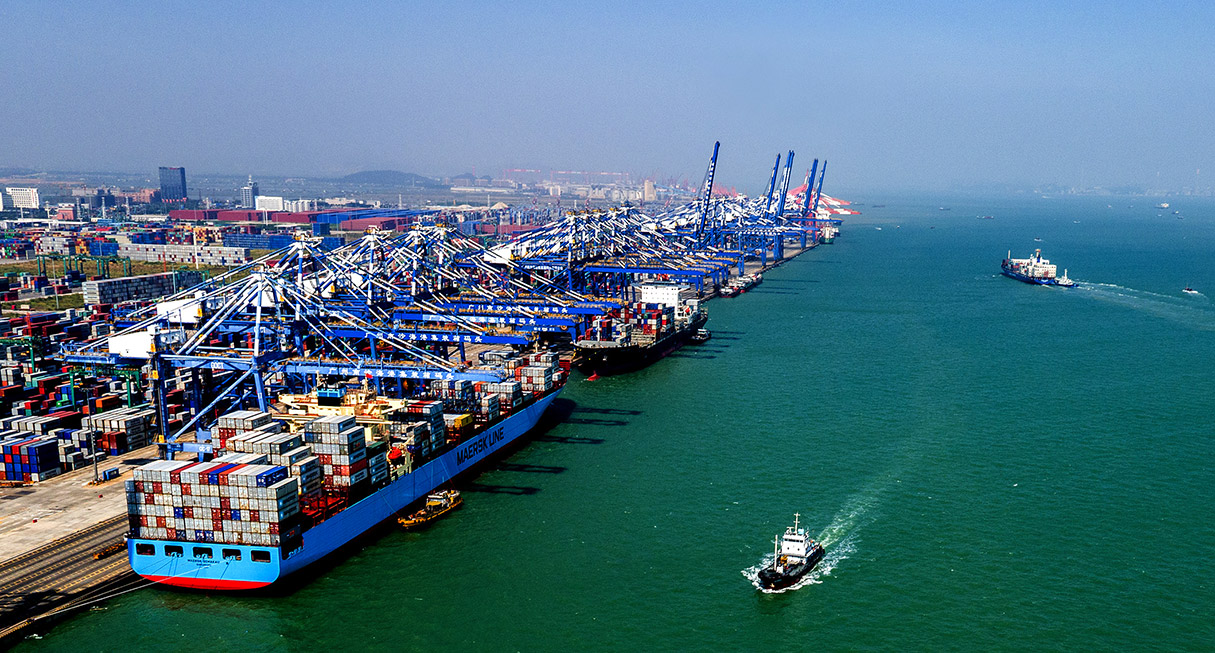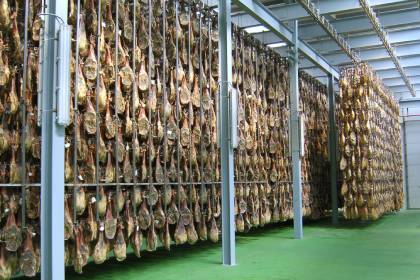Export to China
China is the second – or already the first – economy in the world, behind the United States. During the last decade it has been increasing imports of products from all over the world, but especially from the European Union, which is China’s main trading partner, since it receives 17.1 % of China’s exports and is the source of 12.8 % of its imports..
China is the world’s second largest economy, behind the United States, although many international voices claim that the Asian giant is already the world’s leading economic power, especially after the emergence of covid-19, which has had a much greater impact on the U.S. economy than on China.
A member of the World Trade Organization since December 11, 2001, China began its journey towards a capitalist economy in 1978, but did so under a regime of strict communist political control.
The Asian country adopted a program of reforms that were the starting point of a market economy based on an export-oriented productive fabric, with a more competitive level compared to other producing and exporting countries, although with generally low quality standards.
But over the last decade, China has been working to change its image and its production model and, thanks to economic growth and being the most populous country in the world, with 20% of the world’s population, new social classes of high and middle levels have appeared with the ability to purchase products from other countries.
In 2019, China’s GDP increased by 6.1 %, a growth that will not be repeated in 2020 due to the irruption of the coronavirus, although the International Monetary Fund estimates that the Chinese economy will grow by 1 % this year and also in 2021, with an increase of 8.2 %.
Europe, China’s largest trading partner
Currently, China is the largest exporting country in the world, although during the last few years it has also increased the volume of its imports.
According to ICEX data, in 2019 the total volume of China’s foreign trade in goods was 4,572,019 million dollars (MUSD). Of this total, MUSD 2,498,414 were exports (+0.5 % compared to 2018) and MUSD 2,073,605 were imports which, although they fell by -2.8, had experienced a growth of 15 % in 2018.
The European Union (EU-28) is China’s main trading partner (640,598 million euros (M€) in 2019), given that it receives 17.1 % of Chinese exports (418,957 M€, 6.3 % more than in 2018) and is the origin of 12.8 % of its imports (221,641 M€, 6.4 % more than in 2018). Bilateral trade between China and Europe thus increased in 2019, both in terms of export and import flows.
Other destinations of Chinese exports are: United States (16.8%) and Hong Kong (1.2%), while other imports from China came from South Korea (8.4%), Taiwan (8.3%), Japan (8.2%) and the United States (5.9%).
The main chapters exported by China to Europe were telecommunications equipment, computer hardware, electronic components, electrical machinery, women’s clothing, automotive equipment and components, electrical material, organic chemicals, footwear and brown goods.
Chinese imports from Europe were mainly automobiles, automotive components and accessories, chemical and pharmaceutical products, electronic components, aircraft, metallic and non-metallic minerals, electrical material, electrical machinery, fuels and lubricants, plastic raw materials and semi-manufactures.
Trade relations between the European Union and China are framed within the 1985 Trade and Economic Cooperation Agreement, which is in the process of being transformed into a Cooperation and Association Agreement.
One of the most recent agreements is the one that the EU and China signed on September 14, 2020 regarding the protection of European geographical indications in China.
This bilateral agreement protects against imitations and usurpation of one hundred European geographical indications in China and one hundred Chinese geographical indications in the European Union. It should be noted that the Chinese market has great growth potential for European food and beverages, given that, in 2019, China was the third largest destination for EU agri-food products, with exports reaching €14.5 billion.
Spain has potential to increase exports to China
In 2019, Spanish exports to China grew by 8.3%, reaching €6,801 million (2.3% of total Spanish exports). It is important to highlight that in the period January-June 2020, exports have grown by 12.3 %, reaching €3,539 M, a circumstance that has made Spain currently China’s 8th largest trading partner worldwide.
The main Spanish products sent to China are: frozen pork (15.8 %), copper and its alloys (9.8 %), automotive equipment, components and accessories (4.6 %), edible animal offal (4.4 %), copper waste (3.6 %) and medicines (2.3 %).
The export of other products, such as olive oil (Spain is the world’s leading exporter), also stands out, and it is gaining some weight as an exporter of wines.
In terms of imports, Spain is the third country in the world that imports the most from China. In 2019, imports grew by 8.3 %, reaching 29,155 M€ (9.1 % of total Spanish imports).
The main imported products are telecommunications equipment (6.3 %), data and information processing machines (4.4 %), transistors and semiconductor devices (2.9 %), leather goods (2.6 %), and games and toys (2.5 %).
And, in the period January-June 2020, despite the fact that Spanish imports from China fell by 1.7%, they reached 13,797 M€, a figure that has placed Spain as the second largest importer in the world.
What should you know when exporting to China?
As China is a member country of the WTO and has had a Foreign Trade Law since 2004, any company or individual can import and export with China, although it is mandatory to be registered by the Chinese Administration.
Nevertheless, to export to China it is advisable to have a Chinese importer (agent, distributor or joint venture partner), because he will take care of managing the necessary documentation (transport, customs, commercial, etc.).
Depending on the goods to be exported, China may request documents such as the import quota certificate, the import license, or the inspection certificate issued by the General Administration of Quality Supervision, Inspection and Quarantine (AQSIQ), as well as other sanitary, veterinary and phytosanitary certificates, depending on the exported product.
While China is making progress in simplifying its transit, clearance and customs declaration system, exporters are still required to be registered with the Ministry of Commerce of the People’s Republic of China (MOFCOM) before registering their customs declarations. In addition, these must be with the Chinese customs office of entry within 14 days prior to the arrival of the goods.
Finally, China applies pre-shipment inspection requirements, especially for those goods that affect national security, those of high value or complex technology, those with dimensions or weight exceeding certain parameters, etc. On the positive side, China has designated certain foreign entities to perform the pre-shipment inspections and issue the relevant certificates.
Information & Resources
ICEX. China economic and trade information









